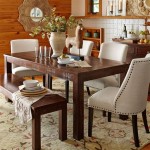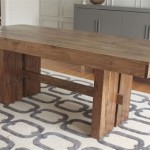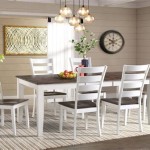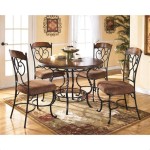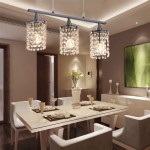Modern Wall Units for Dining Room: A Blend of Functionality and Aesthetics
Modern dining room wall units represent a significant evolution in interior design, moving beyond simple storage solutions to become integral components of a room's overall aesthetic and functional layout. These units offer a versatile way to maximize space, showcase decorative items, and organize essential dining room elements, contributing to a cohesive and stylish environment. Their design encompasses a wide range of styles, materials, and configurations, tailored to suit varying tastes and spatial requirements.
The incorporation of a modern wall unit into a dining room can transform the space from a purely functional area into a multi-faceted environment suitable for both formal dining and casual gatherings. These units are not merely furniture pieces; they are architectural elements that can define the room's character and enhance its visual appeal. Understanding the nuances of modern wall units, including their design principles, material options, and organizational capabilities, is crucial for homeowners seeking to create a dining room that is both practical and visually compelling.
Maximizing Space and Organization
One of the primary advantages of modern dining room wall units is their ability to optimize space utilization. In contemporary homes, where open floor plans and compact living spaces are increasingly common, maximizing available area is paramount. Wall units excel in this regard by providing vertical storage solutions that minimize the footprint on the floor. They allow for the consolidation of items that might otherwise clutter the room, such as tableware, glassware, linens, and decorative objects.
The organizational capabilities of modern wall units are diverse and can be customized to meet specific needs. Units can incorporate a variety of storage compartments, including closed cabinets, open shelves, drawers, and even specialized sections for wine storage or media equipment. This flexibility allows homeowners to tailor the unit to the specific items they need to store and display, ensuring that everything has a designated place. Furthermore, the modular design of many modern wall units allows for reconfiguration and expansion as needs evolve over time.
Beyond simple storage, wall units can also serve as organizational hubs for dining-related activities. For example, a unit might include a built-in bar area for preparing and serving drinks, a display case for showcasing collectibles, or a dedicated section for storing cookbooks and recipe files. By integrating these functions into a single, cohesive unit, the dining room becomes a more efficient and user-friendly space.
The visual impact of a well-organized wall unit should not be overlooked. By strategically arranging items on open shelves and in display cases, homeowners can create visually appealing vignettes that reflect their personal style and interests. This transforms the wall unit from a purely functional piece of furniture into a curated showcase that enhances the overall ambiance of the dining room.
Consider incorporating lighting within the wall unit itself to further enhance its organizational and aesthetic qualities. Integrated LED strip lighting can illuminate shelves and display cases, highlighting specific items and creating a warm and inviting atmosphere. This type of lighting not only improves visibility but also adds a touch of sophistication to the dining room.
Design Principles and Aesthetic Considerations
Modern wall units for dining rooms are characterized by clean lines, minimalist aesthetics, and a focus on functionality. The design principles guiding their creation emphasize simplicity, elegance, and a seamless integration with the surrounding environment. These units are often designed to be focal points in the room, drawing the eye and establishing a sense of order and harmony.
The choice of materials plays a critical role in the overall aesthetic of a modern wall unit. Popular options include wood veneers, laminates, glass, metal, and stone. Each material offers a unique texture, color, and visual appeal, allowing homeowners to select options that complement their existing décor. For example, a wall unit made from dark wood veneer might be ideal for a traditional dining room, while a unit made from white laminate and glass might be better suited for a contemporary space.
Color palettes for modern wall units tend to be neutral and understated, with a focus on creating a sense of calm and sophistication. Common colors include white, gray, beige, and black, often accented with pops of color through decorative items and accessories. However, bold and vibrant colors can also be used to create a more dramatic and eye-catching effect.
The size and scale of the wall unit should be carefully considered in relation to the overall dimensions of the dining room. A unit that is too large can overwhelm the space and make it feel cramped, while a unit that is too small may appear insignificant and fail to provide adequate storage. It is important to strike a balance between functionality and aesthetics, ensuring that the unit is both visually appealing and practical.
Incorporating negative space into the design of the wall unit can help to create a sense of lightness and airiness. Open shelves, empty niches, and strategically placed gaps can prevent the unit from feeling too dense or imposing. This allows the eye to move freely across the surface of the unit, creating a more dynamic and engaging visual experience.
The integration of technology is another key consideration in modern wall unit design. Many units now incorporate built-in lighting systems, power outlets, and even wireless charging stations for electronic devices. This allows homeowners to seamlessly integrate technology into their dining room without sacrificing style or functionality.
Material Options and Durability
The selection of appropriate materials is crucial for ensuring the longevity and aesthetic appeal of a modern dining room wall unit. A wide array of materials is available, each offering unique characteristics in terms of durability, appearance, and maintenance requirements. The choice of material should be guided by factors such as budget, style preferences, and the anticipated usage of the unit.
Wood veneers offer a classic and timeless look, providing the warmth and natural beauty of solid wood at a more affordable price point. Veneers are thin layers of wood that are applied to a substrate, such as plywood or particleboard. They are available in a wide variety of species, including oak, maple, cherry, and walnut, allowing homeowners to customize the appearance of their wall unit to match their existing décor. Veneered surfaces are generally durable and easy to maintain, but they are susceptible to scratches and water damage.
Laminates are synthetic materials that mimic the appearance of wood, stone, or other natural surfaces. They are highly durable, scratch-resistant, and easy to clean, making them a popular choice for modern wall units. Laminates are also available in a wide range of colors and patterns, offering a high degree of design flexibility. However, they lack the natural warmth and texture of wood veneers.
Glass is often used in modern wall units to create a sense of openness and lightness. Glass shelves, doors, and display cases can showcase decorative items while allowing light to penetrate the unit. Tempered glass is a common choice for these applications due to its strength and safety. Glass surfaces are easy to clean and maintain, but they can be prone to fingerprints and smudges.
Metal, such as stainless steel or aluminum, is often used in modern wall units to provide structural support and add a touch of industrial chic. Metal accents can be used to frame shelves, support doors, or create decorative detailing. Metal surfaces are durable and easy to clean, but they can be susceptible to scratches and dents.
Stone, such as granite or marble, is a luxurious option for modern wall units. Stone surfaces can be used for countertops, backsplashes, or decorative accents. They are highly durable and resistant to heat and scratches. However, stone surfaces are also expensive and require specialized maintenance.
The durability of a modern wall unit depends not only on the materials used but also on the quality of construction. Look for units that are made with sturdy frames, strong hardware, and well-engineered joinery. This will ensure that the unit can withstand the rigors of daily use and remain in good condition for many years to come.
Proper maintenance is essential for preserving the appearance and durability of a modern wall unit. Regular cleaning with a soft cloth and mild detergent will help to remove dust and grime. Avoid using harsh chemicals or abrasive cleaners, as these can damage the surface of the unit. Protect the unit from direct sunlight and excessive moisture, as these can cause fading or warping.
By carefully considering the material options and construction quality, homeowners can select a modern dining room wall unit that is both beautiful and durable, providing long-lasting functionality and enhancing the overall aesthetic of their dining space.

Living Room Wall Units Wood Co

Contemporary Dining Room Cabinet Suppliers And Manufacturers Factory Rebon

Dining Room Cabinet Designs For A Sleek And Organized Space

Wally Fold Down Wall Table Hidden Storage 30 Finishes

Dining Room Wall Cabinet Suppliers And Manufacturers Factory Rebon

Vision For The Dining Room Built Ins My New House Inspired

News Events To Be Or Not Cabinets Wall Units

Wall Units Traditional Dining Room Santa Barbara By Closet Crafters Houzz

Dining Room Wall Unit Cabinet Living Bedroom Made In Com

Fitted Dining Room Storage Furniture

